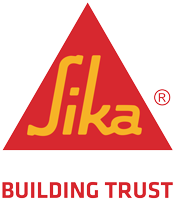Four large tunnels below the Suez Canal – estimated for completion this year – are set to substantially enhance Egypt's traffic infrastructure. Across the project, a wide variety of EB solutions are making crucial contributions.
For nearly 150 years, the Suez Canal in Egypt has served to significantly shorten sea voyages from Europe to Asia – upon its opening, for instance, a steamer going from Marseille to Bombay was able to reach its destination some 30 days sooner than only shortly before. Nevertheless, though, the canal also splits the country in two – with the Sinai Peninsula to the east of the canal, and the substantially larger, economically more powerful part of the country to its west. Until now, options for crossing the canal were limited to two bridges, both opened in 2001, a number of time-consuming ferry connections, as well as a narrow road tunnel near the southern end of the canal. This is why in 2014 a large-scale infrastructure project – involving, among others, a new, parallel canal section and a number of road tunnels beneath the canal – was started to promote the economic development of the canal region and the Sinai Peninsula. The project is high up on the list of measures taken to boost economic development in the country, and its high priority goes along with a highly ambitious construction schedule. Between 2015 and 2017, for instance, this required the non-stop deployment of a 10,000-strong workforce at times.
The four largest tunnels of the project, located near Ismalia and Port Said, essentially constitute two sets of twin road tunnels: The individual tubes, with an inner diameter of 11.40 meters, will each accommodate two lanes in one direction, they will be linked by evenly-distanced cross-passages, and comprise a total of eight ventilation shafts. Excavation is carried out by four large Herrenknecht TBM. The twin tunnels have an overall length of almost 20 kilometers and at their lowermost point run some 70 meters below the surface where they have to resist a groundwater pressure of up to seven bar and – a key requirement – will have to continue doing so for a minimum of 120 years. Other impressive project figures include: more than 1.5 million cubic meters of concrete installed, some of it under water; 24,000 tons of reinforcement steel; a total of 72,000 individual concrete segments; more than 4,000 laboratory tests for quality control; four ready-mix concrete plants; two production plants for the grout used in annulus grouting; and a daily output of 15 concrete lining segments, each comprised of 9 individual segments, from the precast-concrete plant.
The last item on that list was made possible through the use of MasterGlenium ACE 3383: Specially developed for precast manufacture, the concrete admixture ensures the required early-strength development of 15 MPa after twelve hours – a property vital for quick formwork removal and fast production cycles. One kilogram of MasterFiber per cubic meter of concrete prevents the material from spalling in case of fire without compromising its load-bearing capacity. And the MasterRoc MS 610 densified silica fume, incorporated in the concrete, modifies the pore structure of the material to make it tighter and generally more resistant to external impact. Flawless concrete surfaces were the result of the MasterKure 101 curing compound.
A hyperplasticizer from the MasterGlenium range enabled the production of a self-compacting concrete that could easily penetrate the dense reinforcement of the diaphragm walls adjacent to the tubes; and the reinforcement itself is protected from corrosion by MasterLife CI 222. The grout used in filling the voids between the lining segments and the surrounding rock, a procedure known as annulus grouting, was optimized using three different admixtures: A combination of MasterRoc AGA 155, MasterGlenium RMC 315 and MasterMatrix UW 404 served to provide the grouting material with appropriate strength properties during installation as well as to reduce settlement and check water ingress, thus preventing the lining segments from floating and making secondary injection unnecessary.
With BASF's innovative development of tunneling technology, we were amongst the key players in the implementation of this project.

